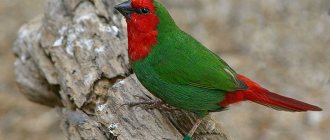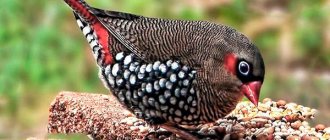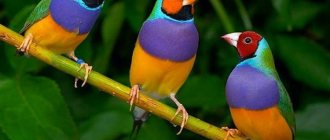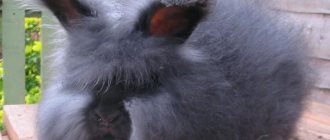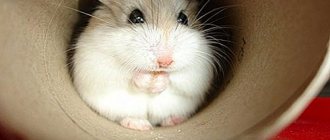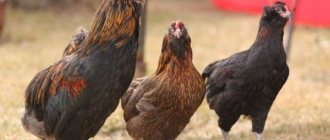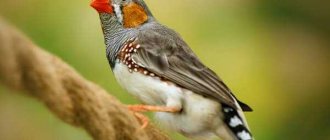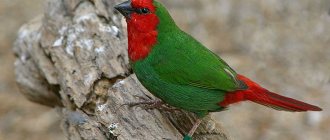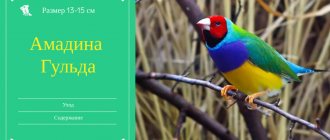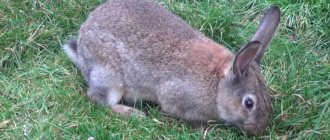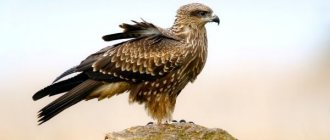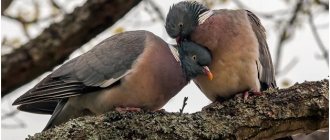When choosing a feathered pet, people often give preference to small, unpretentious birds – finches. First of all, they pay attention to the external characteristics and singing abilities of the bird. But not everyone thinks about how many years finches live. Of course, a tiny finch will not be able to live for several decades, like, for example, some parrots. However, even 5-8 years of life is enough time for the owner to become attached to the ward and love him.
Description, habitat
Finches (lat. Amadina) came from the order of passerines, the family of finch weavers.
This is a miniature, nimble, vocal bird with a body length not exceeding 15 cm and a weight of up to 50 g. The color varies depending on the species, but usually it is variegated, combining up to 5 different colors at once. The beak is thick, arched, as if cast from wax.
Habitat of finches: Australia, Africa, China and Japan, Southeast Asia, Philippines, o. Malay Archipelago. In the 18th century Finches were domesticated in Europe.
By the way finches look, you can tell where their homeland is:
- pastel calm tones in color belong to representatives of temperate latitudes;
- bright combinations of black, blue, green, red, yellow, and purple colors are characteristic of birds from the tropics.
Interesting! Some species of finches change the color of their plumage depending on the season, and in males it can change during the mating season.
Finches birds settle in flocks. They are equally comfortable both in the field and in the forest. They often live in close proximity to humans in city gardens and parks.
Popular types of finches
Amadins are divided into 38 species of birds, as well as 300 of their subspecies. Here are some of the most famous and spectacular representatives of exotic birds:
- zebra finch (Taeniopygia guttata) - males have brick-colored cheeks, “zebra” stripes decorate the neck, sides and chest. In female finches, calm brown tones predominate in their plumage. They live throughout the Australian continent, in the Lesser Sunda Islands, the USA and Portugal;
- Gouldian finch (Erythrura gouldiae) is a bird with bright colorful plumage. The feathers on the head can be colored red, yellow or black, and a blue stripe surrounds the neck. Part of the tail feathers are the same color. The plumage of the back and coverts is green, on the chest it is lilac, the belly is yellow, and towards the tail it becomes almost white. Birds inhabit the Australian continent. The species is classified as endangered;
- rice finch (Padda oryzivora) – ash-colored with white plumage on the cheeks. A dark, almost black cap on the head, extending to the neck. The belly feathers are slightly grey. The breast, sides and back are brighter, with a pearl tint. Bright red beak, black tail. Homeland of birds: the islands of Bali and Java;
- red-headed finch (Amadina fasciata) - is named because of the red plumage on the male's head. The main color is gray-brown with small transverse white spots at the end of the feathers. Found in southern and southwestern Africa;
- Parrot finch (Erythrura) - the main color of the bird is green. Depending on the subspecies, there are red or blue areas on the chest, neck, crown, back of the head and tail. Parrot finches live in an area ranging from southeast Asia to New Guinea, as well as northern Australia;
- scaly-breasted or scaly finch (Lonchura punctulata) - a characteristic difference of this species of bird is the color of the feathers on the belly, chest and sides, which have a dark brown edging, due to which the feathers resemble fish scales. Birds are common in China, India, on the islands of Indonesia and the Philippines, on the island. Taiwan;
- sharp-tailed finch (Poephila acuticauda) - the main color is brownish and silver-gray. The area between the eyes and beak, the belt passing through the back half of the body, and the spot on the chest are painted black. The tail is tapered towards the end. Area - Australia;
- Japanese finch (Lonchura striata domestica) - the species was created by crossing bronze manakins with wild Chinese finches. Birds are characterized by fawn plumage with reddish and brown hues. The feathers on the head, neck and throat are brown; chest and abdomen - light beige; the back, wings and tail are chocolate. They were originally bred in China, but became especially popular in Japan, which is how they got their name.
Zebra
Guldova
Rice
Redhead
Parrot
Scaly-chested
Sharp-tailed
Japanese
Amadin abilities, how to tame
Finches, unlike parrots, are timid birds and not at all so tame. They must be approached carefully, movements must be smooth and slow. Sharp sounds and noises in a room with a bird (which can even cause the finch to die) are unacceptable. After some time, the bird will get used to it and taming can begin.
How finches sing
Among finches, it is predominantly males who sing. The singing of finches is used both to attract females to mating, and when everything is fine with them: they are well-fed, suitable conditions for keeping have been created and contact has been established with the owner. But regarding the quality of the birds’ singing, the reviews of the owners differ greatly - some can listen to the finches singing with pleasure, finding their trills pleasant and melodic, while others, on the contrary, consider the singing dull and monotonous.
Listen to how they do it:
Taming
An important condition for successfully taming a finch is its age. The younger the bird, the easier it is to train. Adult birds have already formed characters and established habits, which they are extremely reluctant to change.
Attention! You can only tame one finch; two or more individuals will distract each other.
How to quickly tame a finch - just release it to freedom. One day, upon entering the room, the owner will see how the feathered pet is breaking out of its cage into freedom. This will mean that the bird has become tame.
- The first step is to move the student into a separate cage, small in size, with an opening side wall or a folding top.
- To prevent the finch from being injured by hitting a window glass or getting stuck in a ventilation grill, or accidentally flying out of the window, the bird’s wings need to be clipped.
- Next, you need to force the finch to sit on the owner’s hand. To do this, carefully, without sudden movements, the bird is driven into the corner of the cage and a hand is placed in such a way that the finch simply has nowhere to go except to jump on it.
- The final stage will be attempts to pull the hand with the finch sitting on it out of the cage. If the bird gets scared and flies away, it should be left for several hours to calm down, and then the experiment should be repeated.
To get the finch accustomed to its surroundings, it is placed on the shoulder. After some time, you can try to put your finger on the bird, lightly touching the bird’s legs. In this way, she will learn to move from shoulder to arm and back.
Important! In order for the finch to associate the space outside the cage with a safe place, you need to install a play stand or a corner with several perches in the room.
Interesting information about taming finches is described in this video:
Reproduction
Breeding is a serious step and requires a responsible approach to the matter. To produce good offspring, both individuals must be healthy.
Amadins should not mate during molting. The best time for reproduction will be spring-summer, at this time there are plenty of natural vitamins, and the weather outside is warm.
Conditions
It is necessary to create the proper conditions for reproduction. Dry grass, hay, and moss should be placed in a closed nesting house. Some material should simply be placed in the cage to encourage the male to build a nest.
During nesting, the cage should be carefully cleaned to prevent the appearance of parasites.
Caring for chicks
After the chicks are born, the parents feed them and warm them with warmth. When watching finches, the main thing to note is the moment when the parents begin to feed the chicks with food, it is then that the diet needs to be supplemented with protein food.
When the chicks are seven to nine days old, they will begin to fledge. To help them at this stage, add mineral supplements, weed seeds and other plants to their parents' food.
You can tell if the chicks are full by their sounds. If their parents feed them well, the chicks remain silent for most of the time.
There are situations when, for some reason, birds refuse to fulfill their parental responsibilities. The reason for this could be many different factors. In such cases, you will have to feed and warm the babies yourself.
Buy poultry, prices
To choose a bird finch, you need to ask the seller to catch the individual you like for inspection. A healthy bird is moderately well-fed, the feathers are dense, without signs of mites and parasites. Health is also indicated by the clear springy movements of the finch and its booming voice.
Having spread the feathers, you should pay attention to the color of the skin. Normally it is light, slightly pinkish. A gray or yellow tint is a clear sign that the bird is sick.
How much finches cost will depend on:
- from sex (males tend to be more expensive),
- varieties,
- age,
- places of purchase.
The price for one individual starts from several hundred rubles.
Reasons affecting life expectancy
In the wild, birds are threatened by predators, but in captivity other factors influence life expectancy.
Keeping and caring for finches
Keeping and caring for finches at home comes down to following simple rules, which directly determine the lifespan of the birds:
- maintaining a certain temperature,
- correct lighting,
- balanced diet,
- purchasing a suitable cage.
The optimal temperature in the room with the bird should be between +18-23°C. Amadins do not tolerate drafts, excessive humidity or, conversely, dry air.
Arrangement of the cage
A cage with dimensions of 30x25x25 cm is suitable for keeping one individual. For two or more finches, a larger house is required - approximately 40x60x100 cm. The shape of the cage is preferably rectangular or square; in a round one, the birds feel uncomfortable and experience stress.
Amadins usually do not chew on bars, so cages of a combined type made of metal with plastic or wood are acceptable. An excellent option is a cage equipped with a retractable tray into which clean, dry sand is poured in a 2 cm layer. Crushed coal and chalk can be added to it. Also in the bird cage you need to place:
- a couple of ceramic or metal feeders,
- closed drinking bowl,
- wooden perches with a diameter of 9 mm.
What to feed
The food for finches is similar to the diet of other poultry:
- grain (1.5-2 tsp per day) - they eat mainly millet, oats, flax, rapeseed, canary seeds, sprouts and seeds of wild herbs. You can give a purchased ready-made mixture created for exotic birds, for example, “Rio”;
- vegetables, some fruits and berries, herbs;
- soft food (2 times a week 1-2 tsp): low-fat cottage cheese, boiled grated egg;
- live food (necessary protein when feeding offspring of finches): bloodworms, worms, other small insects;
- mineral nutrition (helps normalize digestion in the finch, prevents beak deformation): sand, shell rock, eggshells, small pebbles;
- vitamins (which ones depend on the period of life of the finch) are added to the food in the form of drops or powder.
It is necessary to replenish the drinking bowl with clean water in a timely manner.
Important! What you should not feed finches are fragrant herbs (basil, dill, green onions, celery, parsley), as well as avocados, mangoes and persimmons, sweets, salty and fatty foods.
Light mode
For finches, it is important that daylight lasts at least 12-13 hours. Lack of light leads to metabolic disorders and rickets in birds, which is why the cage with the birds is placed in the brightest room.
In summer, it is useful to take the finch in a cage outside, making sure that one of the sections of the cage is always shaded. In winter, additional lighting is provided with UV lamps, which are installed at a distance of 1.5-2 m from the cage with the bird.
Excessive lighting also negatively affects the finch, as does a lack of light. Constant exposure to the sun or very bright artificial lighting in the evening can cause depression in the bird.
Hygiene and bathing
An obligatory point to ensure a comfortable existence for finches and prevent the formation of diseases in birds is to maintain cleanliness in the cage. If hygiene procedures are neglected, finches may become infected with the down-eater mite, which is dangerous not only for them, but also for humans.
Disinfection is carried out at least once a month. Before the procedure, you need to remove all dirt and dust and rinse the cage with boiling water. Next, apply the disinfestant solution with a brush, wait for it to dry completely and thoroughly wash off the chemical with hot water and soap. It is also necessary to regularly wash the feeders, drinking bowl and change the sand in the pan.
Amadina bathes
The finches themselves also need baths. Water washes away dirt from feathers, and when infected with parasites, helps relieve itching. A bathing suit is installed in the finches' cage, which is filled with water to a depth of 1.5-2 cm. After the birds have taken water procedures, the bathing suit is removed, having first been washed to avoid the formation of a mucous coating on its walls.
Care during shedding
Twice a year, finches molt, a natural process of changing plumage, lasting about 20 days. During molting, the birds are weakened, they experience sudden mood swings, their appetite disappears, and the males even stop singing. The owner can help the finches cope with their painful condition easier and faster, which requires:
- 10-hour daylight hours;
- temperature increase to +26-28°C and air humidity to 60-70%;
- daily water procedures;
- mineral supplements and vitamin complexes.
Important! Sometimes the reasons why a finch's feathers fall out are not related to natural characteristics, but to illness or stress suffered by the bird. Pathological feather loss is very difficult to stop and the process is often fatal.
What to feed
The basis of the diet of small weavers:
- grain mixtures;
- weed seeds;
- soft food (eggs, low-fat cottage cheese, boiled rice);
- sprouted grain;
- vegetables;
- sunflower seeds.
You can create the following menu for birds:
- 1 kg millet;
- 250 g of meadow grass seeds;
- 100 g each of hemp seeds, chumiza, mogar, lettuce and rapeseed;
- 50 g flax seed.
All components must be mixed and given to the bird once a day, 1 tsp. for one individual. You can enrich the menu with cereals, fresh herbs, berries, fruits, and vegetables.
Breeding finches at home
Breeding finches at home is not a difficult task. Birds become sexually mature at 7-9 months, but it is still not recommended to promote mating before they reach at least one year of age. It is also necessary to prevent the reproduction of finches more than 3 times a year, otherwise, unable to withstand excessive stress, the female risks getting sick.
A wooden nesting house installed in a cage will help to facilitate the mating of birds. Building materials for the nest are also needed: hay and straw, sawdust, twigs, twigs, and dust are suitable.
If, while watching the pair, the owner sees that the male finch is singing his song more often than usual, and the female finch is taking playful poses inviting the male and dragging blades of grass to make a nest, then the birds are ready to mate and hatch future offspring.
The female finch lays 4 to 7 eggs, and then both parents alternately sit on the eggs for 11-17 days.
Amadins both hatch their eggs and can peck them. This occurs against the backdrop of a lack of mineral and protein substances in birds, so during the period of hatching offspring, it is necessary to provide the parents with appropriate nutrition.
How to distinguish a female from a male
Breeders planning to breed finches are often interested in the question of how to determine the sex of their charges. Regardless of the species of finches, you can distinguish a male from a female with your own eyes, by the melodic trills produced only by males and even from photographs, focusing on some external signs. It is easy to distinguish a boy finch from a girl if you know that the male is always somewhat larger than the female and his color is much brighter.
Interesting! Males of some species of finches change their plumage before mating and appear similar in color to the females. And then it becomes almost impossible to distinguish birds by gender.
How to care for chicks
Amadine chicks are born helpless, bald and blind. New parents feed the chicks with semi-digested food, regurgitating it from the crop. After 5-7 days, the chicks open their eyes, and on days 7-9 they begin to fledge.
After about a month, the baby finches try to fly out of the nesting house. During this period, you need to keep an eye on them and if the chick falls, return it to its parents. So that the young have the opportunity to practice jumping and taking off, a pair of perches are fixed near the nest.
Reviews
Dmitry Evgenievich, 46 years old, Tula
I thought for a long time about whether it was worth having a pet in the apartment. We definitely decided not to consider cats and dogs, opting for birds. My daughters have wanted a parrot or a canary for a long time, but they and I decided that we should be original and consider getting a bird that others don't have. Olesya and Anya went to the pet store on their own and literally fell in love at first sight with bright birds called finches. It was New Year's Eve.
These creatures cost much less than a parrot, and I promised that I would compensate my daughters for this difference with other gifts, but we still did not know what tests we would have to go through! Firstly, instead of the gentle singing of birds, we got constant sounds reminiscent of... the croaking of frogs! My wife, for example, really liked these sounds, but we just went crazy. Secondly, finches are so unclean that they had to clean the cage almost every day. We still didn’t understand what use the finches were – neither to play, nor to talk – just to listen to the constant strange sounds they made. Two little “parasites” did not live with us for long. My daughters immediately said that they wouldn’t cope, so we went to the pet store again, but not for a new purchase, but to hand them over.
Karina Sergeevna, 37 years old, Krasnoyarsk
The character of adult finches can also be recognized by the behavior of their newborn chicks. The birds themselves are charming: round shiny eyes, contrasting with a very serious face; red nose, bright plumage. Not to say that they are more beautiful than parrots, but much more original than other birds. I bought two for my office at once: a male and a female. I have quite a few clients, and I decided that I would have fun with them. My pair of finches turned out to be quite prolific: there were chicks, and more than once. The first chicks turned out to be so noisy and demanding of food that it seemed to me that they needed to be moved away, otherwise the parents would die from fatigue! I won’t say what happened to these little birds (some died, some had to be given to friends), but a couple still lives with me.
Dinara Sharapova, 23 years old, Bashkortostan
I always wanted to have a pet that would become my friend. As a child, I already had a parrot, which died very quickly, and it took me a long time to recover from this shock. I decided to buy a bird with the beautiful name Amadin. Chicha was on the same wavelength as my child: she demanded constant attention, but did not give anything in return. If you didn’t feed her once, Chichi’s squeak would be heard in the apartment within a radius of ten meters. After this incident, my bird did not live a day without such hysterics. “I taught women to speak, but, God, how can I silence them!” - I remembered the lines of a famous poem, and I resigned myself, because Chicha does not understand me, and attempts to re-educate her end in nothing. After all, we are responsible for those we have taught, so I continue to keep Chicha with me. Conclusion: the finch will not become your friend, it is unlikely to entertain you, but it will develop tolerance in you.
